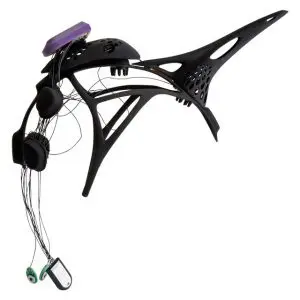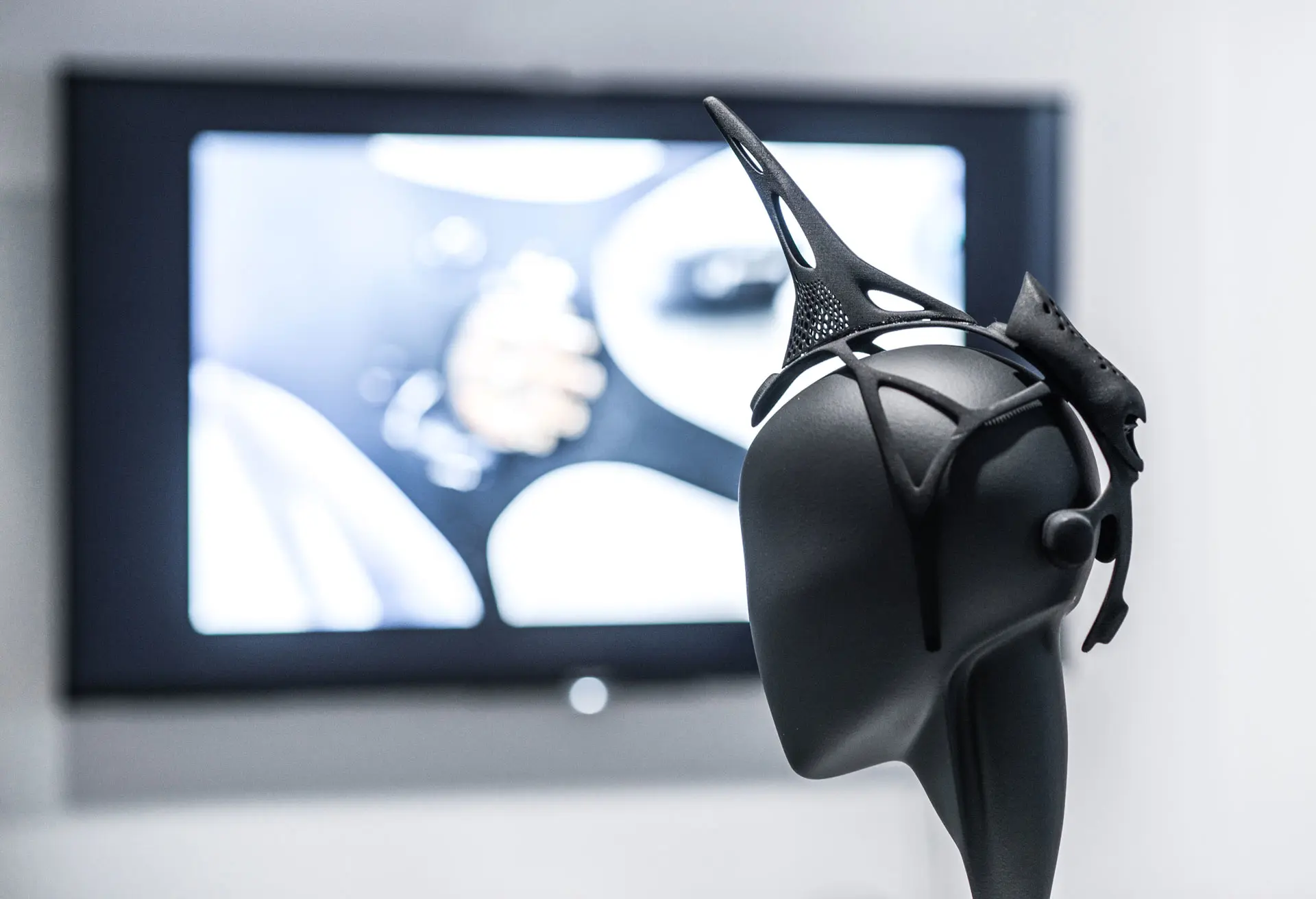Each time you have to make a decision based on external stimuli, a wave of activity happens in your brain. It’s known as the “P300 wave,” a brain mechanism used to evaluate or categorize events that happen around you. While scientists are still not clear on how it works exactly, they agree that it’s a good signal to measure humans’ cognitive processes. They also know that kids with ADHD have a delayed P300 wave.

This is where Agent Unicorn steps in. The device, invented by Dutch technology fashion designer and Fast Company Most Creative People recipient Anouk Wipprecht, is a headpiece with a fantastic horn coming out of its front. The horn not only has a practical use (more on this later) but serves to pique the interest of kids, who get to use it in a playful way. In fact, Wipprecht says, the more fantastic the horn is, the more excited and engaged kids tend to be.

The 3D-printed headpiece holds eight EEG electrodes that connect to the brain without the help of conductive gels, with each electrode placed on the right skull spots to record the P300 activity. On the horn there’s an 8-megapixel camera that records video, capturing the perspective of the child at all times. Both the EEG electrodes and the camera are connected to a processor, a Raspbery Pi Zero computer, and when it detects the P300 wave, it saves the EEG data and pairs it with a video clip of what the kid was seeing before and after the P300 event. This trail of continuous data, Wipprecht says, provides an insight into how children who suffer from ADHD react to things through their entire day.
“One of the advantages of Agent Unicorn is the chance to gather data when a child is in a mental state closer to that of their day-to-day life, due to the more natural environments that the headpiece can be used in, and the agency it offers children,”Wipprecht said in an article about the device in the engineering publication IEEE Spectrum.

While a medical device like Agent Unicorn may seem out of the ordinary compared to Anouk’s other recent work, she says she’s been thinking about how to use her engineering powers to help people therapeutically for a long time. During her residence at the Ars Electronica Futurelab in Linz, Austria, she got interested in EEG as a way to measure brain activity. There she met Dominik Laister, an expert on the autistic spectrum at the Barmherzige Brüder Hospital near her lab, who advised her on Agent Unicorn. That led her to work with Christoph Guger, founder of G.tec, which is a producer of EEG equipment. Standard EEG machines with 64 electrodes are clunky and pricey (they can cost up to $10,000), and they require trained medical personnel. Working with Guger, she managed to develop Agent Unicorn’s miniature system with only six electrodes needed to monitor the P300 wave.
Wipprecht believes that Agent Unicorn may help reduce drug reliance by providing caregivers with a better understanding of how ADHD affects kids, which will inevitably lead to palliative measures. But the device, she warns, is still in clinical trials to determine its real effect. In the meantime, you can buy a simplified, Bluetooth-connected version–without the camera horn–from from G.tec for $1,100.
Recognize your brand’s excellence by applying to this year’s Brands That Matter Awards before the early-rate deadline, May 3.
